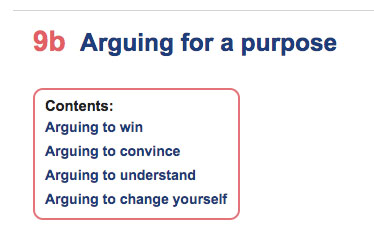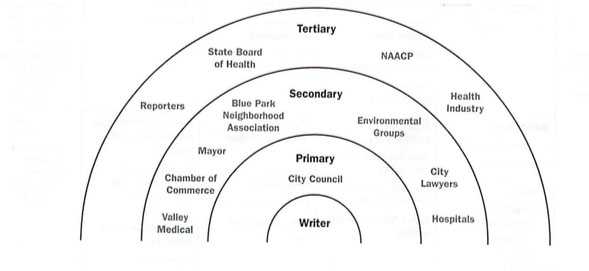Friday, 5/12 D-WRD Session notes:
Aligning Practice with Purpose
Because thinking about audience and purpose always leads to concerns about assessment, we began today’s session — Bridget Wagner, Tricia Hermes, Margaret Poncin and me — by reviewing our multimodal assessment resources and practices since 2010:
When we first implemented a programmatic approach to multimodal composing projects and assignments, there was exactly one dependable and widely known source that we could draw on for assessing such work: Borton and Huot’s 2007 “Responding and Assessing” in Multimodal Composition: Resources for Teachers.
Then there was Odell and Katz’s 2009 ‘”Yes, a T-Shirt!’: Assessing Visual Composition in the ‘Writing” Class'”: “Computer technology is expanding our profession’s conception of composing, allowing visual information to play a substantial role in an increasing variety of composition assignments. This expansion, however, creates a major problem: How does one assess student work on these assignments?”
More recently, Shipka’s arguably more sophisticated, generative, and rigorous Statement of Goals & Choices (from her 2011 Toward a Composition Made Whole) brings together rhetorical contexts, deep reflection, and a guiding process for students to engage as they meta-cognitively articulate their choices and decisions. (Examples.)
A couple of weeks ago, a WRD speaker, Kristin Arola remarked in her talk, “Slow Composition: American Indian Rhetorics and Mindful Making Practices,” on her — and probably our — experience with students when we ask them after a multimodal project is finished and completed, “why did you choose and use that photo there?” The answer is often unsatisfying, and Arola attributed the problem to “fast rhetoric” and “rhetorical velocity” that doesn’t leave the student time to think about her choices and to document them as they happen.
Our session today might be productively focused on the initial rhetorical purposes in multimodal composing projects:
Lunsford, St. Martin’s Handbook:

Sheehan: Technical Communication Today:

Shipka, “Negotiating Rhetorical, Material, Methodological, and Technological Difference: Evaluating Multimodal Designs.”
“I argue for the importance of requiring that students assume responsibility for describing and evaluating the purposes and potentials of their work. I argue that students who are required to produce “precisely defined goal statements” for their work become increasingly cognizant of how texts are composed of a series of rhetorical, material, and methodological “moves” that, taken together, simultaneously afford and constrain potentials for engaging with those texts (Beach 137–38). Instead of relying on instructors to “tell them what their problems are and how to remedy those problems” (127), students become more sophisticated and flexible rhetoricians, able to describe and share with others the potentials and limitations of their texts.” (347)
One possible outcome: in some instances — during times of political or cultural polarization, say — rethinking conventional notions of audience and readers by focusing on the idea of publics and counterpublics  (Michael Warner).
(Michael Warner).
Public: a space of discourse organized by the discourse, usually a dominant discourse: white, male, successful, heterosexual, urban and American; growing up to speak like an NBC News broadcaster, for example. This kind of public comes into being only in relation to texts and their circulation.
Counterpublic: members are not merely a subset of the public, but constituted through a conflictual relation to the dominant public.
Warner’s concept is more complex than that, but we can already see some possibilities for analytic and invention/composing uses in the writing classroom:
We brainstormed a possible prompt:
- Identify a “public” and its associated “counterpublic”
- Analyze the rhetorical strategies and assumptions of each
- Compare and contrast them in two columns
- How do their texts circulate? In the New York Times? Via graffiti? A web site? Protest signs? Twitter? In specialized venues?
- What values do the public & counterpublic seem to have?
- Do they share any values?
- What counterpublics are you—or have you been—a part of?
Can you articulate a public/counterpublic multimodally?
![]()
We can followup in the AQ on the public/counterpublic concept if people are interested, along with these other suggested session topics & workshops:
- Video shooting and editing
- Typographic principles of design applied to slideware
- Your ideas: is there a software program you’d like to learn? A teaching-with-technology method or issue you’d like to read about or practice? Email me, pretty please, and we’ll add it to the agenda.
